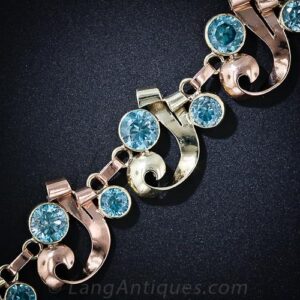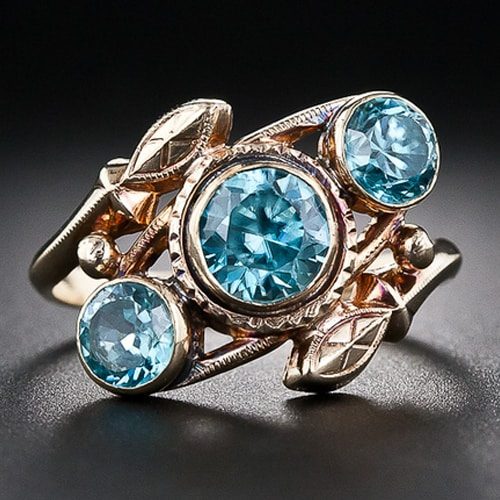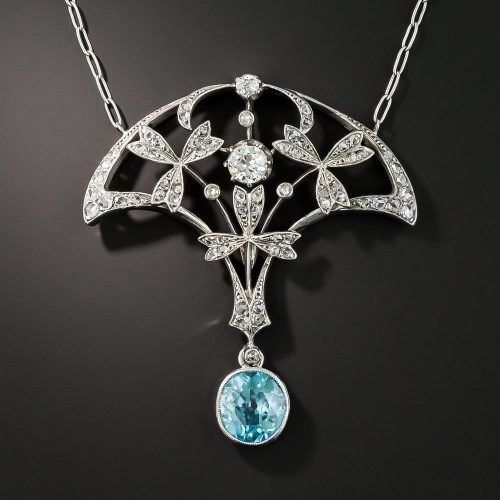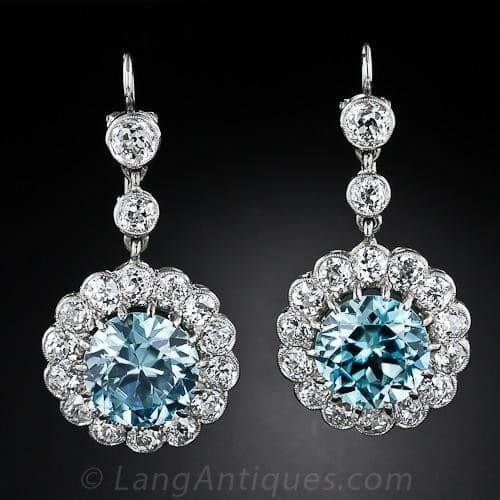
Zircon is a zirconium silicate that crystallizes in the tetragonal crystal system. It is highly dispersive and brilliant. Natural zircons range from colorless to pale yellow or green. These colors result from trace amounts of hafnium, uranium, and thorium. Over time, these radioactive components break down the lattice of the crystal, eventually (over tens of thousands of years) destroying the crystal, leaving it with an amorphous structure and a dark pithy appearance.
Zircons that are young and unaffected by radioactivity are termed high zircons. These stones are transparent yellowish-green, golden, and greenish-brown in color with extremely high dispersion. High zircons can be heated and become colorless or blue. These heat-treated zircons imitate diamond’s optic properties better than any other naturally occurring gem mineral. For that reason, they have long been used as diamond substitutes. That is why the name zircon has been associated with being synthetic or imitation.
Zircon is a relatively common constituent of igneous rocks, particularly granite. Inclusions of zircon, containing Uranium 235 have been geologically used to positively date rock formations. Gemstone crystals are quite rare and usually occur in coarse-grained pegmatites. They are also found to accumulate in alluvial deposits because of their high specific gravity.
A Brief History of Zircon
The name zircon derives from the Arabic words “Zar”, meaning gold, and “Zum” meaning color. It is one of the gems used in the Kalpa Tree of the Hindu religion. This tree was a symbolic offering to the gods described by poets in the 19th Century as “a glowing mass of precious stones”. The variety of zircon used in the Kalpa Tree was green, representing the tree’s foliage.
Zircons were used in Greece and Italy as far back as the 6th Century AD. After faceting began in the 14th Century, zircons were often sold as diamonds. Colorless zircons were being mined at that time in France.
Reddish-brown zircons had moderate popularity in European jewels of the 19th century.
Currently, the most popular zircons are blue, colorless, and golden brown.
Blue zircon is a substitute birthstone for December, along with turquoise and blue topaz.



Gemological Information for Zircon
| Color: | Colorless, Blue, Yellow, Orange, Brown, Violet & Red |
| Crystal Structure: | Tetragonal – 4 Sided Prisms with Pyramidal Terminals |
| Refractive Index: | High stones = 1.777 – 1.987 |
| Durability: | Fair to Good, this Decreases with Heat Treatment |
| Hardness: | 6.5 to 7.5 |
| Family: | |
| Similar Stones: | Spessartite, Sphene, Andradite, Sphalerite, Topaz, Tourmaline, Synthetic Rutile, Diamond & Strontiium Titanate |
| Treatments: | Heat Treatment to Change Color |
| Country of Origin: | Sri Lanka, Myanmar, Cambodia, Thailand & Australia |
Zircon Care
| Ultrasonic Cleaning: | Not Safe |
| Steam Cleaning: | Not Safe |
| Warm Soapy Water: | Safe |
| Chemical Attack: | Avoid |
| Light Sensitivity: | Heat Treated Stones may Return to their Original Color |
| Heat Sensitivity: | May Change Color |